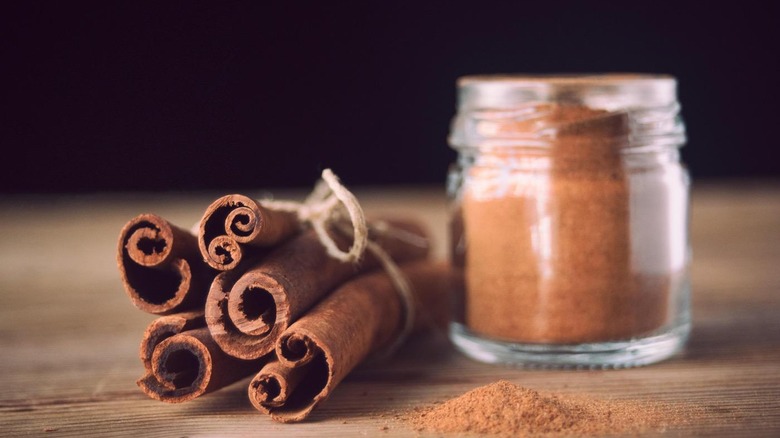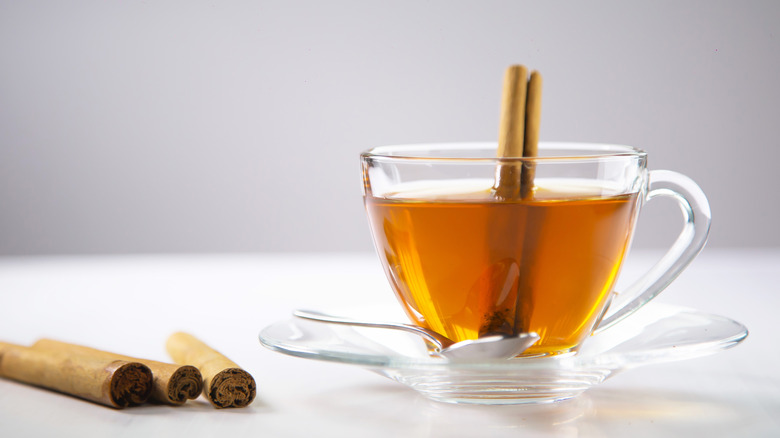The Difference Between Types Of Cinnamon
We'll fill you in on the other stuff, too
From dorms to five-star restaurants, cinnamon is the spice most likely to appear in any kitchen. Here's what makes it so irreplaceable—just please, whatever you do, don't take the cinnamon challenge.
Types of Cinnamon
True story: I once told a former boss that the 24-ounce container of cinnamon he coveted like a child wasn't "true" cinnamon. He was not happy. But I was right; a variety of spices are often sold as cinnamon, with two types—Ceylon and cassia—being most common. Although the intoxicating flavor and scent associated with foods like cinnamon rolls or cinnamon swirl bread belongs to cassia cinnamon, Ceylon cinnamon is, in fact, regarded as the real deal.
RELATED Cinnamon Roll Doughnuts "
Cassia cinnamon (Cinnamomum cassia) is typically imported from China, Vietnam, India and Indonesia, and is the most typical type of cinnamon available for sale in the United States and Canada. Cassia owes its deep reddish-brown color to the cinnamon tree, from which one piece of hard bark is harvested, and then rolled or ground. Cassia's flavor is spicy sweet with a mild scent.
Ceylon cinnamon (Cinnamomum verum), imported from Sri Lanka and Madagascar, is more commonly used in Europe and Mexico (though it can indeed be found in American grocery stores with larger spice selections). This type of cinnamon has a sweet, almost-floral aroma. Ceylon sticks are created by rolling several layers of delicate bark from the interior of a cinnamon tree, resulting in a light-brown color.
You've probably heard competing things: Cinnamon is toxic; cinnamon is good for you. The toxicity talk is only sort of true; cassia cinnamon tends to have high levels of coumarin, a natural substance found in plants that can cause liver and kidney problems. However, many natural remedies recommend taking cinnamon to reduce inflammation, decrease nausea and even treat the common cold. Additionally, a recent study found that the spice can reduce blood sugar spikes and activate antiaging properties within the body. The leaders of the study recommend simply cooking with cinnamon, as opposed to consuming it in larger quantities; mixing a spoonful of honey with a few shakes of cinnamon when you're feeling under the weather is perfectly OK, too.
Whole Sticks vs. Ground
Both cinnamon sticks and ground cinnamon are readily available, and each complements a different type of recipe. When infusing cinnamon into liquids, it's best to use cracked full sticks, which will impart the spice's subtle flavor without overpowering the mixture. Turn to ground cinnamon for recipes that require the full punch of the spice's potency, like spiced desserts or Indian stews. If you're not interested in having both on hand, buy cinnamon sticks and grind them with a spice grinder or Microplane when using a recipe that calls for the powder.
How to Use Them
Though the first uses for cinnamon that come to mind are likely sweet baked goods, the spice is necessary in many savory dishes, from the spiced tomato sauce in North African and Israeli shakshuka to the aromatic broth of Vietnamese banh mi bo kho. Cinnamon is also found in Indian cooking, where it's often layered with aromatics (a mixture of vegetables and herbs cooked in fat) to form the base for stews and curries.

